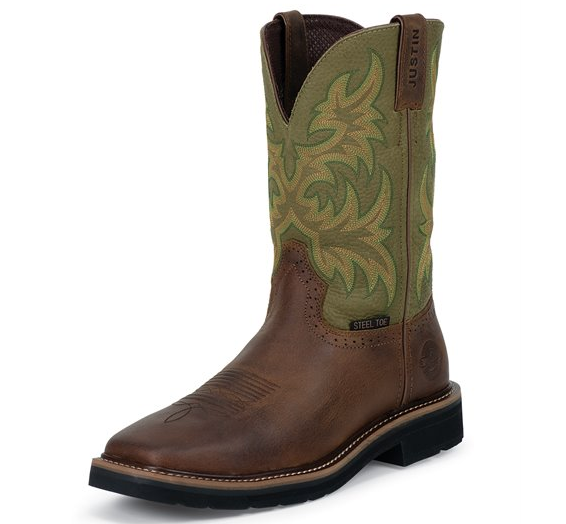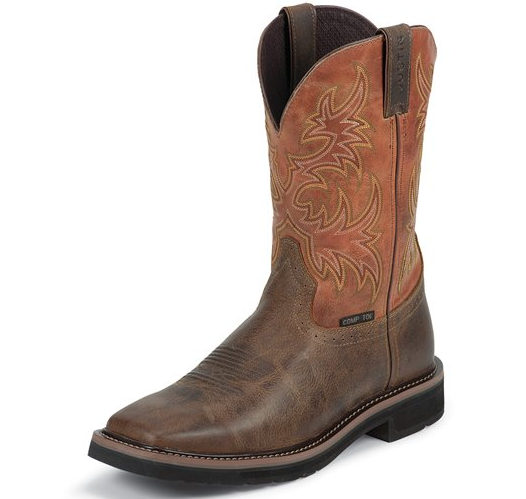I’ve lived in the cold for over 20 years. Snow and negative degree temperatures are as familiar to me as coffee in the morning.
When buying new boots people often wonder which is better steel toes or composite toes. In this scenario, I just want to know which one keeps my feet warmer and I’ve often heard comp toes don’t conduct heat like steel toes.
So when the question comes stand “do composite toe boots really get cold?” the simple answer is NO. Composite toe boots will not make your feet cold. You can walk through the deepest snow and your comp toe boots will not pass that cold onto your feet.
One of my major concerns when working outside was how to keep my feet as warm as possible in the coldest temperatures possible when I have to wear safety toe boots. In one corner there are the trusty steel toes and in the other corner are the composite toes.
While both steel and composite toes must exceed the standard ASTM safety regulations which state the toe caps must withstand 2,500 pounds of pressure without compromising and though they’re very similar in safety they have very different. Here is a comparison post on steel toe vs composite toe boots and how to choose the best one for your job.
The reason being the materials that makeup comp toes just do not soak up heat or cold. In contrast, steel toes will soak up that cold and pass it on to your feet.
If you were to wear a pair of boots that look and feel exactly the only difference being the one on your left being a steel toe and the one on your right being a composite toe. The steel toe boot is going to make your feet considerably colder considerably quicker.
What Composite Toes are Made Out of
Composite toe boots are made out of a combination of materials including:
– Kevlar
Carbon fiber
Plastics
Fiberglass
There is not going to be any metal in the comp toe at all. Because there is no metal in composite toes you’ll be able to walk through a metal detector without setting it off and you’re also reducing the risk of shock if your steel toe cap is exposed.
Of course, most employers require that if your steel toe cap is exposed you need to purchase new boots or immediately cover the exposed steel but in the case you’re unaware its exposed composite toes will have your back.
Are Composite Toes More Comfortable?
Composite toes are going to be made almost exactly the same as steel toe boots. If you’ve had steel toes before they’re going to fit and feel almost the exact same. They will be made in the same shape and size as steel toe boots.
So NO comp toes are not going to be more or less comfortable.
comp toes are going to be lighter in weight. The materials made going into the toe cap is inherently lighter when compared to steel toes. Many people think that the type of toe cap is going to make a big difference in weight when in fact in my experience it does not.
What makes a steel toe boot heavier than comp toe boots is going to be the sole itself. Some soles are made with solid rubber and some will have multiple components that make it lighter. Such as a softer more compressible midsole.
When you’re buying new boots and you’re worried about the weight I wouldn’t be concerned with the toe’s material but rather focus on the sole.
Are Composite Toe Boots More Expensive?
Composite toes and steel toes are going to be roughly the same price. Often times you’ll see comp toes more expensive than steel toes and other times you’ll see steel toes more expensive than comp toes.
The toe itself does not cause a boot’s price to go up but rather the quality of the leather, if its waterproof or chemical resistant, the quality of the outsole, and of course the brand name.
for example:
The Justin WK4688 is a steel toe and the WK4812 is a comp toe.
They are almost the exact same boot. If it weren’t for the color the only difference would be what makes up the safety toe. The green top is steel toe and the tan top is comp toe but no difference in price as of right now.
What Else Can Keep Your Feet Warm?
Of course, wearing thick socks or doubling up socks is going to be the easiest way to keep your feet warm but let’s say you don’t want thick socks because they make your boots fit too tightly.
1. Feet warmers Of course, wearing thick socks or doubling up socks is going to be the easiest way to keep your feet warm but let’s say you don’t want thick socks because they make your boots fit too tightly. – these are much like the hand warmers that your rub for a couple of minutes using friction to active that magical feel-good warmness but these go in your boots.
2. Electric Insoles – Battery operated insoles that feel like an electric blanket for your feet. These are for the really cold days. When snow and ice are slapping you in the face and its hard to move your fingers. These can get kind of expensive but well worth it when your toes are about to freeze off. Prices range from $40-$100
3. Thinsulate Insoles – These are pretty much long-johns for your feet. They won’t add extra material around the width of your foot but will keep them extra toasty. Keep in mind if you don’t pull out your current insoles (all steel toes have removable insoles) your feet are going to get tighter in the instep area.
Conclusion
The cold is rough on everybody. When you’re choosing a new pair of boots and you’re worried about your toes freezing off keep in mind composite toe boots will not transfer heat or cold to your feet.
Composite toes are made out of nonmetallic materials that will not set off a metal detector and weigh slightly less than their steel toe cousins.
Keep in mind if you’re looking for a purely lightweight boot the sole is what adds the most weight, not what the toe cap is made from.
You’re also not going to shell out more money for comp toes either. Steel toes and comp toes are oftentimes the same price. What causes prices to be different is the quality of the leather, if the boot is waterproof, chemical resistant, the quality of the sole, and the brand name.
If you’re trying to beat the cold, other than thick socks or doubling up on socks, you can use toe warmers, electric insoles, and Thinsulate insoles to help keep your feet at optimal warmness


